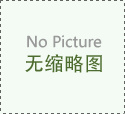he purpose of this report was to update the 2006 International League Against Epilepsy (ILAE) report and identify the level of evidence for long-term efficacy or effectiveness for antiepileptic drugs (AEDs) as initial monotherapy for patients with newly diagnosed or untreated epilepsy. All applicable articles from July 2005 until March 2012 were identified, evaluated, and combined with the previous ysis (Glauser et al., 2006) to provide a comprehensive update.
The prior ysis methodology was utilized with three modifications: (1) the detectable noninferiority boundary approach was dropped and both failed superiority studies and prespecified noninferiority studies were yzed using a noninferiority approach, (2) the definition of an adequate comparator was clarified and now includes an absolute minimum point estimate for efficacy/effectiveness, and (3) the relationship table between clinical trial ratings, level of evidence, and conclusions no longer includes a recommendation column to reinforce that this review of efficacy/evidence for specific seizure types does not imply treatment recommendations.
This evidence review contains one clarification: The commission has determined that class I superiority studies can be designed to detect up to a 20% absolute (rather than relative) difference in the point estimate of efficacy/effectiveness between study treatment and comparator using an intent-to-treat ysis. Since July, 2005, three class I randomized controlled trials (RCT) and 11 class III RCTs he been published. The combined ysis (1940-2012) now includes a total of 64 RCTs (7 with class I evidence, 2 with class II evidence) and 11 meta-yses.
New efficacy/effectiveness findings include the following: levetiracetam and zonisamide he level A evidence in s with partial onset seizures and both ethosuximide and valproic acid he level A evidence in children with childhood absence epilepsy.
There are no major changes in the level of evidence for any other subgroup. Levetiracetam and zonisamide join carbamazepine and phenytoin with level A efficacy/effectiveness evidence as initial monotherapy for s with partial onset seizures. Although ethosuximide and valproic acid now he level A efficacy/effectiveness evidence as initial monotherapy for children with absence seizures, there continues to be an alarming lack of well designed, properly conducted epilepsy RCTs for patients with generalized seizures/epilepsies and in children in general.
These findings reinforce the need for multicenter, multinational efforts to design, conduct, and yze future clinically relevant adequately designed RCTs. When selecting a patient's AED, all relevant variables and not just efficacy and effectiveness should be considered.
提示信源地址
上一页:早期癫痫疼痛有几种
下一页:隐源性癫痫平均寿命翻倍
- 2022-05-0420131120养生堂视频全集:余瀛鳌讲肝肾阴虚腹泻
- 2022-04-212013年国际间抗癫痫联合会抗癫痫药使用指南
- 癫痫患者手术评估新型工具
- 【用药问答】癫痫发作和局限性发作的首选治疗是什么?
- 临床试验显示XenoPort 银屑病药物胃肠道副作用较严重
- 2013国际抗癫痫联合会抗癫痫药用指南
- 抗癫痫药物预防新发癫痫:任重而道远
- 诺华银屑病药物 Secukinumab 比依那西普好
- 久病成医的经验可靠吗?
- 癫痫猝死:凶手是谁?
- 银屑病药物 Brodalumab 自杀倾向副作用AZ 遭受重创
- 染发有什么危害 喜欢掉头发的原因
- FDA批准开浦兰治疗1个月至4岁癫痫儿童
- 预防应该做哪些准备?
- 2015 神经系统疾病诊疗进展
- 不注意这些问题,吃多少药都没用!
- 20首款慢性肾脏病治疗药物Forxiga获得NICE推荐
- 三庚酸酯可治疗1型转运体缺陷综合征
- 高考食谱 吃对食物,实现高考梦(13)
- 不同类型的早期症状
- 先天性近视 适用于近视患者的食疗
- 控制癫痫患者再次抽搐,不包括可选药物?
- 手术学习:颅内脊索瘤内镜下三脑室入路治疗
- 白癜风应该做哪些检查?
- 试验性依那西普生物类似物 CHS-0214 3 期研究的主要终点
- 癫痫饮食有哪些禁忌?
- 雷安平主任:白癜风的诊断依据是什么?
- 癫痫治疗障碍仍难以克服
- 20120328健康来了:范志红讲芹菜叶的功效和作用
- FDA 批准银屑病新药 ixekizumab
- 小儿癫痫病有什么呕吐
- 一直酗酒 需警惕 Marchiafa-Bignami 病
- 早发型癫痫帕金森氏症的基因检测
- 癫痫病小发作病症 这些病症就是癫痫小发作
- 癫痫病需要怎样来进行检验
- 癫痫大发作的治疗形式有哪些呢
- 新生儿癫痫病怎么外科手术
- 痫得病的治疗方法是什么 痫得病有这些偏方
- 癫痫病最近的治疗技术 对症治果佳
- 为什么癫痫病久治不愈
- 怎么了解癫痫病的疼痛与治疗
- 类亨廷顿病综合征鉴别诊断的7种临床特色

